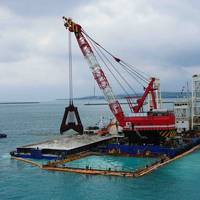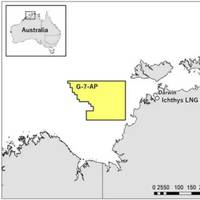U.S. Oil Production Still has Growth Potential

Crude oil production in the United States is booming, reports Poten & Partners in its weekly opinion.According to the U.S. Energy Information Administration, U.S. Field Production of Crude Oil reached 13.8 Million barrels per day (Mb/d) in September 2025, a remarkable recovery since bottoming out in 2008 below 5 Mb/d.The shale oil boom was primarily responsible for this turnaround. The decision to allow crude oil exports from the U.S. at the end of 2015 also contributed, because it made U.S. crude accessible to the international market. This export access converged U.S.
Petrobras Sandwich Hull Tank Design Receives ABS Approval

ABS issued an approval in principle (AIP) to Petrobras for its safety-enhancing “sandwich hull” design concept for floating production storage and offloading (FPSO) tanks.The design uses parts of longitudinal and transverse elements constructed with steel-concrete-steel sandwich structures that allow tanks to remain free of internal obstructions, promising to improve operational efficiency during tank inspections and enabling activities to be performed using remotely operated tools and automated devices such as robots.ABS completed design reviews based on class requirements.
Efficiency First: Inside Olympic Subsea’s Bet on Greener Offshore Vessels

A new generation of hybrid vessels is demonstrating significant gains in both fuel economy and operational output. For Olympic Subsea’s owner and CEO Stig Remøy, it proves that technology-led efficiency is the fastest path to decarbonization—and a powerful business case.When Stig Remøy began pivoting Olympic Subsea toward subsea and renewables a decade ago, the move was met with some internal skepticism. “Naturally, there were internal discussions — some believed oil and gas was the future,” he recalled.
Odyssey Marine Seeks U.S Offshore Lease for Mineral-Rich Sand Mining

Odyssey Marine Exploration said on Friday it has sought U.S.
DeepOcean and Jana Marine Enter Saudi Arabia Subsea Partnership

Ocean services provider DeepOcean and Saudi Arabia-based Jana Marine Services have signed a heads of terms agreement to establish a joint venture company that will offer integrated subsea solutions to the offshore energy industry in the Middle East.The intended joint venture, to be named JADE Subsea Services, plans to enter into a five-year charter agreement with Jana Marine for a newbuild DP2 hybrid diving support vessel (DSV) capable of performing subsea construction, inspection…
Vard Electro Gets Onboard PSV-to-Research Vessel Conversion Project

Vard Electro, a subsidiary of the Fincantieri-owned Vard Group, has signed an agreement with the German shipyard Lloyd Werft for the delivery of complete automation and power management systems to a Platform Supply Vessel (PSV) currently being converted into a research vessel.The scope of supply covers the removal of the vessel’s existing automation systems, replacing it with Vard Electro’s advanced SeaQ Integrated Automation System (IAS) and SeaQ Power Management System (PMS)…
Offshore Drilling Gains Momentum in US as Onshore Fades

Rigs drilling beneath the deep waters of the Gulf of Mexico will drive U.S. oil industry growth this year and next as onshore production slows due to lower prices and maturing shale fields, and analysts and consultants expect the trend to continue as new technology and friendly regulations attract investment offshore.The offshore oil and gas sector took a backseat to shale in recent years because drilling at sea requires years of construction work and higher upfront investments. Entry costs were lower for shale production and returns quicker, so rapid expansion in shale made the U.S.
Survitec Launches Next-Gen Foam System for More Effective Fire Protection

Survival technology specialist Survitec has launched its next-generation high-expansion foam fire suppression system, designed to deliver higher foam output at lower operating pressures while reducing both installation and through-life costs for shipyards and shipowners.The key breakthrough lies in a redesigned generator that produces greater volumes of foam at significantly lower feed pressures. Traditionally, high pressure has been a limiting factor in foam system performance…
DOF Scores $200M in Vessel Contracts with Petrobras

Norwegian offshore supply vessel owner DOF Group has secured long-term contracts for two of its vessels with Petrobras for work offshore Brazil.The contracts, with a combined value of approximately $200 million, are for Skandi Chieftain high-spec subsea vessel and Skandi Olympia DP2 construction support vessel.The vessels have been awarded four-year charters with Petrobras.Both vessels will operate with one WROV and are expected to be delivered in October 2026.The contracts follow the same competitive tender process that resulted in the contract awards for DOF’s Skandi Achiever…
United Oil & Gas Signs Up TDI-Brooks for Survey Offshore Jamaica

United Oil & Gas has signed a non-binding memorandum of understanding (MoU) with TDI-Brooks to secure a specialist survey vessel for a campaign offshore Jamaica.The work is related to the planned piston coring and surface geochemical program on the company’s Walton Morant Licence.The campaign forms a key part of United's forward work program under its extended license to January 2028. The survey will involve the collection of 40-60 seabed core samples across the Walton and Morant Basins…
Robosys Automation Secures Offshore Wind Vessel Retrofit Contract

Robosys Automation, a leader in maritime autonomy, vessel control systems, and smart shipping solutions, has announced that it has secured a new contract to retrofit a 26-meter Damen 2610 Fast Crew Supplier (FCS) Twin Axe High Speed Support Vessel (HSSV), with its flagship VOYAGER AI advanced maritime autonomy software.The vessel, built in 2015 to Lloyd’s Register classification standards, is powered by twin Caterpillar C32 engines with direct drives and is equipped with an Alphatron autopilot…
AKOFS Offshore Inks $246M Vessel Deal with Petrobras

Norway-based subsea well intervention and installation services company AKOFS Offshore has signed a firm contract with Petrobras, for its subsea equipment support vessel AKOFS Santos, which will continue to operate offshore Brazil.Following a competitive tender process, the vessel will continue to perform services as a multi-purpose supply vessel (MPSV) for Petrobras in Brazil under a new contract.The contract has a duration of four years, with operations expected to start in January 2027…
DeepOcean Gets Offshore Installation Job at Equinor’s Norwegian Fields

Ocean services provider DeepOcean has been awarded a SIMOPRO – simultaneous marine operation and production – installation contract by Equinor on the Norwegian continental shelf.DeepOcean’s scope of work entails SIMOPRO installation work on both the Åsgård and Visund fields. The company will undertake onshore project management, engineering and procurement services as well as offshore operations.A SIMOPRO operation refers to a complex offshore job where marine construction or…
Roll Group Welcomes Wide Deck Carrier to Its Fleet

Roll Group has signed the long-term charter of the wide deck carrier Bigroll KMC Beaumont from its partner KMC Bluewhale.The vessel was delivered in Singapore and will immediately begin operations to support of Roll Group’s expanding global project logistics and transportation services.With its 139-meter length overall and 32-meter deck width, the Bigroll KMC Beaumont is expected to enhance the company’s ability to transport heavy and oversized cargoes across key markets, particularly…
Petrobras Completes Test in Offshore Oil Area Ahead of Environmental Assessment

Brazil's President Luiz Inacio Lula da Silva said on Tuesday that environmental agency Ibama should be satisfied with the results of an emergency drill done by state-run oil firm Petrobras in the country's Foz do Amazonas basin, ahead of Ibama's official assessment."Petrobras has already carried out the test. Ibama should be satisfied with the results of the research, and Ibama will now grant us the license to carry out the first experiment," Lula said in an interview with local news channel Rede Amazonica.Despite Lula's claims…
ACUA Ocean Hydrogen-Powered USV Completes 24-Hour Sea Trial

ACUA Ocean's hydrogen-powered unmanned surface vessel (USV) PIONEER has successfully completed the world's first continuous, remote 24-hour offshore operation on zero emissions, marking a breakthrough in the decarbonization of the global maritime sector.The sea trials demonstrate the commercial potential of hydrogen power for maritime operations while supporting the UK's ambition to become a world leader in clean maritime innovation.During the trial, PIONEER sailed to the Eddystone Lighthouse…
Argentina’s 30 MMtpa LNG Ambition by 2030 – Is It feasible?

The development Argentina’s vast Vaca Muerta share is transforming the nation into a rising energy exporter, with oil and pipeline gas already flowing abroad and an ambitious multi-phase ‘Argentina LNG’ initiative aiming to secure a permanent place in the global liquefied natural gas (LNG) market. While geological resources appear sufficient, the scale and pace of development, however, present challenges.‘Argentina LNG’ is a large-scale LNG scheme designed to massively develop Vaca Muerta's resources to deliver energy to domestic and international market.
RWE, North Star Ink Long-Term SOV Charter Agreements

Germany’s largest utility RWE and U.K.’s largest shipowner-operator North Star have signed long-term agreements for next-generation service operation vessels (SOVs) to maintain RWE’s growing offshore wind fleet.The companies have agreed that RWE will charter two SOVs, the Grampian Eagle and the Grampian Kestrel, from North Star, both capable of using alternative low-emission fuels.Full marine services will be delivered by North Star as part of the charters.RWE and North Star have also signed reservation agreements for two newbuild vessels delivered by the Norwegian Vard Group.
Oceaneering Upgrades Survey Vessel for Simultaneous Autonomous Missions

U.S.-based subsea services and technology firm Oceaneering has completed a major upgrade of its Ocean Intervention II oceanographic research vessel, equipping it to perform simultaneous autonomous offshore survey missions.The retrofit, carried out in early 2025 on the 25-year-old vessel, has made it capable of launching and recovering both uncrewed surface vehicles (USVs) and autonomous underwater vehicles (AUVs).The vessel, originally launched in 2000 for geophysical and geotechnical survey work…
POSH Welcomes AHTS Vessel to its Fleet

PACC Offshore Services Holdings (POSH), an offshore marine solutions provider, has expanded its towage and installation fleet with the addition of a new anchor handling towing (AHT) vessel, POSH Courage.This fleet enhancement strengthens POSH’s capacity to undertake larger or multiple towages, further boosting the company’s ability to execute concurrent tows and offering clients greater scheduling flexibility and operational scalability.Built for demanding global offshore infrastructure projects…
ABS and FLOWRA to Advance Offshore Wind Technologies

ABS and the Floating Offshore Wind Power Technology Research Association (FLOWRA) of Japan signed a memorandum of understanding to collaborate and explore new technologies to support the floating offshore wind industry.FLOWRA is a technical research association that works with overseas organizations to research and develop common basic technologies for floating offshore wind to reduce costs and risks.“For over 160 years, ABS has been leading the charge for safety excellence in the marine and offshore industries.
Rotra Futura RoRo Vessel Enters Offshore Wind Operations

The Rotra Futura Roll-on/Roll-off (RoRo) vessel has entered operations, with the transportation of wind turbine blades from Denmark to the United States.The project supply vessel, specifically designed to handle larger and heavier offshore wind turbine components, collected the 108-meter-long blades at the Port of Aalborg, Denmark, under the supervision of deugro Denmark’s wind experts.The vessel, delivered in late March 2025, was developed as part of the the partnership between Danish logistics specialist deugro…
Bonaparte CCS Project Awarded Major Project Status

The Bonaparte CCS project has been awarded Major Project Status by the Australian Government. It is the first offshore carbon capture and storage (CCS) project to receive the status in Australia.The Bonaparte CCS Assessment Joint Venture is operated by Inpex subsidiary Inpex Browse E&P (53%) and also involves TotalEnergies CCS Australia (26%) and Woodside Energy (21%).The awarding highlights the project’s recognized potential to support a lower carbon future as well as reflecting…







